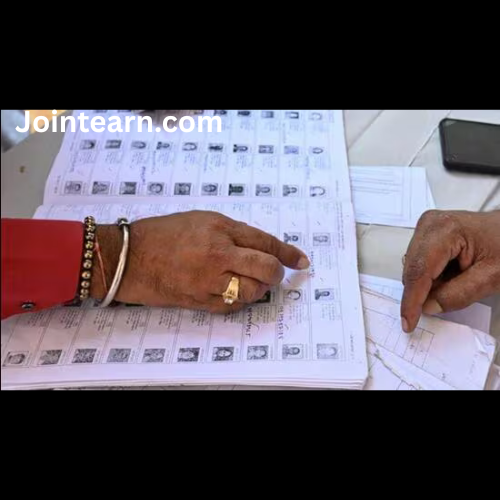Bihar’s 2025 assembly elections delivered a striking verdict: voters rewarded continuity, governance, and subtle political strategy over theatrics and aggressive campaigning. At the heart of this outcome was Chief Minister Nitish Kumar, whose measured approach and policy initiatives propelled the Janata Dal (United) to its strongest performance since 2010 and helped the National Democratic Alliance (NDA) secure the largest vote share ever recorded by an alliance in the state.
When Kumar first assumed office as Bihar’s chief minister in March 2000, India was in a very different place. Smartphones were nonexistent, Aadhaar cards had yet to be conceptualized, internet connectivity was slow and unreliable, and only one city in India operated a short, 4 km metro line. Narendra Modi had not yet entered public office, and Kumar’s initial tenure was short-lived, a minority government overshadowed by Lalu Prasad Yadav’s stronger coalition.
Since then, Kumar has demonstrated remarkable political agility. Rising from a student leader at the Bihar College of Engineering, he has built a durable career spanning over 25 years. Over four consecutive terms as chief minister, Kumar has navigated shifting alliances, political setbacks, and even a significant defeat in the 2014 general elections when the JD(U) was sidelined without the BJP. Despite these challenges, he has remained the central figure in Bihar politics, the only heartland state where the BJP has never held the chief ministership.
Muted Campaign, Maximum Impact
The 2025 elections were expected to be challenging for the septuagenarian leader. Five years prior, the JD(U) had struggled amid internal sabotage from the Lok Janshakti Party, falling to third position by seats. Public dissatisfaction with employment opportunities and concerns over Kumar’s health added to the uncertainty. Yet, Kumar’s approach in 2025 was uncharacteristically restrained: he avoided media interactions, preferred small rallies over mass gatherings, and communicated through a series of video appeals. This disciplined and understated strategy proved highly effective.
Kumar complemented his low-key campaign with a series of welfare initiatives aimed at consolidating his support base. Prominent among these was a direct cash transfer of ₹10,000 to women and the formalization of part-time government employees, many of whom were women. These measures strengthened his core vote banks among marginalized castes and women, mitigating the usual anti-incumbency sentiment that can challenge long-serving leaders.
Turning the Election Into a Referendum
The NDA strategically framed the election as a referendum on “Jungle Raj,” referring to the RJD’s 15-year rule from 1990 to 2005, which was often criticized for lawlessness and weak governance. With more than 90% of Bihar’s electorate having witnessed Lalu Prasad’s tenure firsthand, this approach cleverly cast the election as a judgment on governance and public order, rather than just promises made over the past five years.
Interestingly, opposition attempts to focus on Kumar’s age and health inadvertently bolstered his image. Constant speculation about his physical fitness and the suggestion that the BJP aimed to replace him generated public sympathy, reinforcing his stature as a leader capable of steering the state through challenges.
Kumar’s personal stature and political discipline also limited the effectiveness of his opponents’ campaign. His vote base — comprising extremely backward classes, women, Dalits, and some upper-caste supporters — remained loyal, while his calm demeanor contrasted sharply with the RJD’s boisterous and often confrontational campaigning. This contrast helped the JD(U) appear more credible, stable, and governance-focused in the eyes of voters.
Results Reflect Governance Over Charisma
Election outcomes confirmed that Bihar’s electorate favored tangible development over charisma. In contests framed as a choice between “Sushashan Babu” (good governance) and “Yadav Raj” (the RJD leadership), the public decisively chose continuity and administration. Kumar’s tenure is credited with improving infrastructure, strengthening policing, reducing caste-based violence, and transforming rural roads from mud tracks to concrete thoroughfares.
Gopal Mandal, a shopkeeper in Araria, summed up the sentiment: “Could we have ever imagined that mud tracks can turn to concrete? Only Nitish ji could make that happen.” This grassroots recognition of infrastructure improvements and law-and-order initiatives highlights the centrality of practical governance to Kumar’s electoral appeal.
The Bigger Picture
Kumar’s success in 2025 underscores several key dynamics in Bihar politics. First, disciplined campaigning and a focus on welfare measures can overcome concerns related to age or health. Second, strategic framing of elections as a referendum on past governance can effectively mobilize public sentiment, especially when contrasting with periods perceived as lawless or chaotic. Third, consolidating key voter groups — women, marginalized castes, and loyal party supporters — remains a cornerstone of electoral success.
Ultimately, the 2025 Bihar elections reaffirmed Nitish Kumar’s reputation as an agile, strategic, and resilient political leader. His measured approach, combined with welfare-focused governance, not only neutralized opposition attacks but also resonated with ordinary citizens who directly benefited from his policies. The JD(U)’s performance and the NDA’s record vote share reflect the enduring power of pragmatic governance over flamboyant campaigning in shaping electoral outcomes in India’s heartland states.
Kumar’s political journey — from student leader to four-term chief minister — continues to illustrate that, in Bihar, effective administration and a disciplined campaign can swing votes decisively, even in the face of skepticism and strong opposition.


Leave a Reply